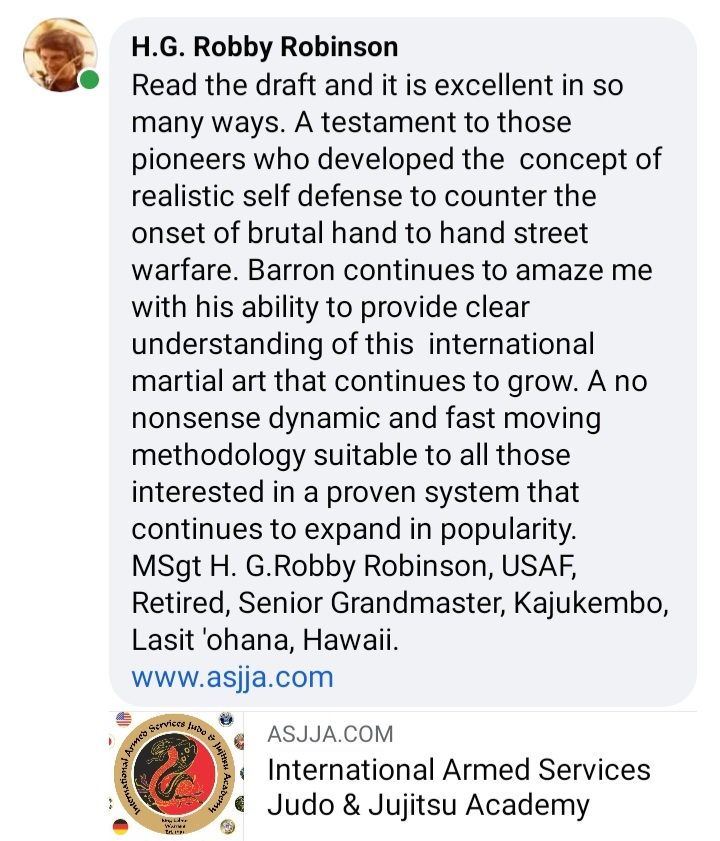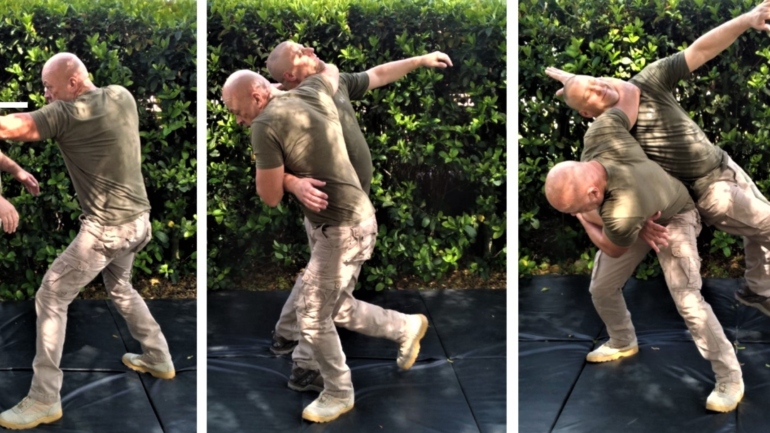
If Boxing is called the sweet science then Kajukenbo should definitely be referred to as the savage science of street fighting. Kajukenbo was developed as a brutally effective street fighting system, the reader should take notice that I didn’t say self-defense system. The creators of Kajukenbo literally brought the street into the dojo. Those who brought about the concepts and creation of Kajukenbo trained like they were fighting in the streets and knew if they didn’t get it right, they would likely end up cut, beaten, stabbed, shot and even dead.
Kajukenbo is NOT the peaceful way, nor is it the way of de-escalation. Kajukenbo’s mindset is one of approaching or attacking violence with greater overwhelming violence. Hit first, hit fast, hit hard and finish the guy! Kajukenbo’s history shows us that Kajukenbo was never about the avoidance of violence. Engagement and destruction were the strategy and tactics of Kajukenbo.
The strength of Kajukenbo lies in how techniques from the different styles that made up Kajukenbo (Karate, Judo, Kenpo and Boxing) are combined. Taking the opponent out of the fight as quickly as possible by delivering techniques in combination as BALLISTIC as possible to cause as much damage possible is the aim of Kajukenbo. You cannot do these things if you don’t ground yourself in the principles of physics. The only way for optimal performance in Kajukenbo is to understand the forces at work, by the numbers, then work on increasing the value of those numbers though repetition.
Kajukenbo is literally opening the whole can of “whup ass”. The most effective of Kajukenbo techniques are ones that effectively dole out the principles of physics, quickly and forcefully coupled with a will to achieve the goal. Physics in Kajukenbo might not seem like the most obvious subject to consider, but for a science that seeks to understand everything about the elements of motion, energy and force, the connection to Kajukenbo is clear. The six principles of physics that are important in Kajukenbo are acceleration, force, momentum, energy, speed and velocity. Their interdependence is a key factor in Kajukenbo’s combination attacks.
Kajukenbo is a fighting style geared for the streets. The test of truth regarding your fighting skills is whether they work or not. The basics of applying any successful technique be it a punch, a kick or a throw can be broken down into a few factors:
Acceleration – Without acceleration there is little or no power. Acceleration determines whether your technique hits or misses or if you can be countered or not. If honed by practice for control acceleration can become an over whelming factor in a street fight.
Force – Force is a factor that results in the acceleration of an object. You will want to make sure that over time you develop a sense of how much force is being generated by your acceleration, so you can improve your acceleration.
Momentum – Momentum is defined as the product of an objects mass multiplied by its velocity. An effective technique is usually going to be very quick and strong. The goal is to generate maximum velocity allowable by time and space.
Energy – Energy plays an important role in the physics of Kajukenbo, the more energy your techniques and combinations possess the more damage you can do.
combinations possess the more damage you can do.
Velocity – Velocity is a term often used interchangeably with Speed, however, their physical definitions are quite different. Speed is a quantity that only has magnitude not direction. It refers to how fast an object is moving. Velocity is a vector quantity and it refers to the rate at which an object changes its direction. The difference being that is Velocity has direction and magnitude. If one wants to punch harder or develop a bone breaking throw training may need to focus in the torsional vector. Meaning improving the velocity of rotation where these forces are often applied in punching striking kicking and throwing.
Physics as well as the kind of physical and mental toughness built through hard training is the way to win street altercations. A study of physics in relation to such a diverse fighting method like Kajukenbo can help us better understand how to use our bodies more efficiently to deliver ballistic movements and techniques. Breaking down the way energy is harnessed into our mass and our speed, physics gives us a clear view of where we can improve. It provides a road map to how we can become better punchers, kickers, throwers etc. Improve in all areas and ranges of motion, so we can hit harder and faster. It will give one the competitive edge and the advantage in the street! The place Kajukenbo was designed in mind for.
As an older Kajukenbo practitioner and athlete (yes, serious KJKB practitioners are in my opinion combat athletes), while being tough and being in shape are necessities, I have come to understand that knowledge of bio mechanics and understanding the elements of motion save wear and tear on the body. Proper biomechanical execution and knowledge of what makes our techniques sound and can function the most efficiently can increase your longevity. Giving us the ability to keep training strong so that we can remain strong!
Lastly, Kajukenbo is a brutally extreme fighting method which more than potentially revolves around a life or death scenario….not a ring. One may take punishment but one also has to be tough enough withstand and then dole it out. There are no rounds in the street, no time outs, no rest periods. Your own style of fighting is a personal thing. This only develops through diligent training. Only then will the moves which you will depend on become automatic, reflexive and instinctive. The best style then is a versatile collection of moves, striking, punching, kicking, throws and takedowns that works well for you that are and can be performed at the level of optimal performance.
Boxing Combination with Shoulder Throw
 1.) Both you and the opponent are standing in a right foot forward lead stance. 2.) The opponent throws a lead right straight punch (jab). Bending at both knees drop shift low and duck or slip the opponent’s incoming straight punch. The right foot shifts back toward the three o’clock position. The left foot shifts forward toward ten o’clock. Simultaneously as you drop below the incoming punch execute a straight right punch to the opponent’s body. Your left elbow stays tight to the body and left hand protects at the chin. 3.) Pivot on both feet clockwise. Turning your left hip into the target and counter with a left shovel hook to the opponent’s body.
1.) Both you and the opponent are standing in a right foot forward lead stance. 2.) The opponent throws a lead right straight punch (jab). Bending at both knees drop shift low and duck or slip the opponent’s incoming straight punch. The right foot shifts back toward the three o’clock position. The left foot shifts forward toward ten o’clock. Simultaneously as you drop below the incoming punch execute a straight right punch to the opponent’s body. Your left elbow stays tight to the body and left hand protects at the chin. 3.) Pivot on both feet clockwise. Turning your left hip into the target and counter with a left shovel hook to the opponent’s body.
 4.) Pivot clockwise on both feet and execute a right upper cut to the opponent’s chin 5.) Execute the quick shift then push off the left foot and step forward with the right foot. As if throwing a rear hand straight punch, strike your opponent’s right shoulder with a left heel of palm strike and grab his clothing at the area struck. This strike should be hard enough to disrupt his posture and rock him back on his heels.
4.) Pivot clockwise on both feet and execute a right upper cut to the opponent’s chin 5.) Execute the quick shift then push off the left foot and step forward with the right foot. As if throwing a rear hand straight punch, strike your opponent’s right shoulder with a left heel of palm strike and grab his clothing at the area struck. This strike should be hard enough to disrupt his posture and rock him back on his heels.
(The heel of palm strike targeting the pocket of the shoulder disrupts the opponent’s posture and rocks him back onto his heels. Notice the opponent is rocked back on the heel of his left foot and his lead foot is off the ground).
6.) With a short quick jerk with the left hand, pull the opponent into you. This should rock him to his front and off of his heels. Simultaneously step your right foot straight to the inside of his right foot.
 7.) Pivot on your right foot counter – clockwise and bring your left foot back between your opponent’s feet. Simultaneously pull the opponent forward and bring your right arm up under his right arm. Pinch his right bicep between your right bicep and forearm.
7.) Pivot on your right foot counter – clockwise and bring your left foot back between your opponent’s feet. Simultaneously pull the opponent forward and bring your right arm up under his right arm. Pinch his right bicep between your right bicep and forearm.
(The toes of both of your feet should be in line with the toes of his right foot. Your knees should be bent and your axis forward. Your belt line should be a few inches lower than your opponent’s beltline. Your opponent should be up on his toes, his balance broken forward).
8.) Straighten your legs and bend at the waist popping your hips up and lifting him into the air (this is an explosive movement). 9.) Keeping your grip on the opponent, bring your left elbow downward, twisting your upper body toward your left hip to finish the throw.
Multiple Punch Counter
 1.) From a fighting position your opponent throws a round house punch. 2.) Step forward with the right foot and with drawing your hands back, strike his punching arm with a left outward thrusting block and an inward thrusting block. 3.) The opponent follows up with a left round house type punch, shuffle in with the right foot forward and strike the opponents incoming arm with the boney area of the outside of your right forearm. Your left hand rechambers and comes up along the right side of your face.
1.) From a fighting position your opponent throws a round house punch. 2.) Step forward with the right foot and with drawing your hands back, strike his punching arm with a left outward thrusting block and an inward thrusting block. 3.) The opponent follows up with a left round house type punch, shuffle in with the right foot forward and strike the opponents incoming arm with the boney area of the outside of your right forearm. Your left hand rechambers and comes up along the right side of your face.
 4.) Push of the left foot and step forward with the right shuffling toward twelve o’clock and strike the side of your opponent’s neck with a left outward sword hand. 5.) Immediately execute a right punch as your feet shift position. Your right foot shuffles back and pivots counter-clockwise as the left foot moves forward toward the direction of the ten o’clock position. Follow through with the punch by turning your hand over. 6.) Push off the left foot and step forward with the right foot (toes should be pointing toward the twelve o’clock position). Strike your opponent’s right shoulder with a left heel of palm strike and grab his clothing at the area struck. This strike should be hard enough to disrupt his posture and rock him back on his heels. (Note: The heel of palm strike targeting the pocket of the shoulder disrupts the opponent’s posture and rocks him back onto his heels. Notice the opponent is rocked back on the heel of his left foot and his lead foot is off the ground.)
4.) Push of the left foot and step forward with the right shuffling toward twelve o’clock and strike the side of your opponent’s neck with a left outward sword hand. 5.) Immediately execute a right punch as your feet shift position. Your right foot shuffles back and pivots counter-clockwise as the left foot moves forward toward the direction of the ten o’clock position. Follow through with the punch by turning your hand over. 6.) Push off the left foot and step forward with the right foot (toes should be pointing toward the twelve o’clock position). Strike your opponent’s right shoulder with a left heel of palm strike and grab his clothing at the area struck. This strike should be hard enough to disrupt his posture and rock him back on his heels. (Note: The heel of palm strike targeting the pocket of the shoulder disrupts the opponent’s posture and rocks him back onto his heels. Notice the opponent is rocked back on the heel of his left foot and his lead foot is off the ground.)
 7.) With a short quick jerk with the left hand, pull the opponent into you. This should rock him to his front and off of his heels. Simultaneously step your right foot straight to the inside of his right foot. 8.) Pivot on your right foot counter – clockwise and bring your left foot back between your opponent’s feet. Simultaneously pull the opponent forward and bring your right arm up under his right arm. Pinch his right bicep between your right bicep and forearm.(Note: The toes of both of your feet should be in line with the toes of his right foot. Your knees should be bent and your axis forward. Your belt line should be a few inches lower than your opponent’s beltline. Your opponent should be up on his toes, his balance broken forward.)
7.) With a short quick jerk with the left hand, pull the opponent into you. This should rock him to his front and off of his heels. Simultaneously step your right foot straight to the inside of his right foot. 8.) Pivot on your right foot counter – clockwise and bring your left foot back between your opponent’s feet. Simultaneously pull the opponent forward and bring your right arm up under his right arm. Pinch his right bicep between your right bicep and forearm.(Note: The toes of both of your feet should be in line with the toes of his right foot. Your knees should be bent and your axis forward. Your belt line should be a few inches lower than your opponent’s beltline. Your opponent should be up on his toes, his balance broken forward.)
9.) Straighten your legs and bend at the waist popping your hips up and lifting him into the air (this is an explosive movement). Keeping your grip on the opponent, bring your left elbow downward, twisting your upper body toward your left hip to finish the throw.



